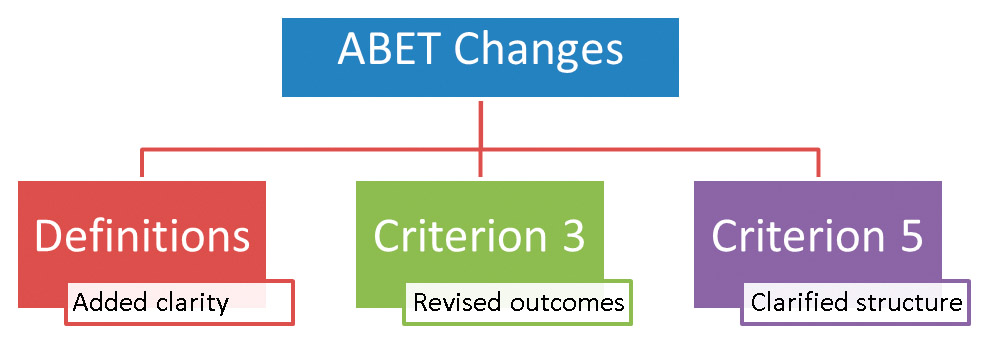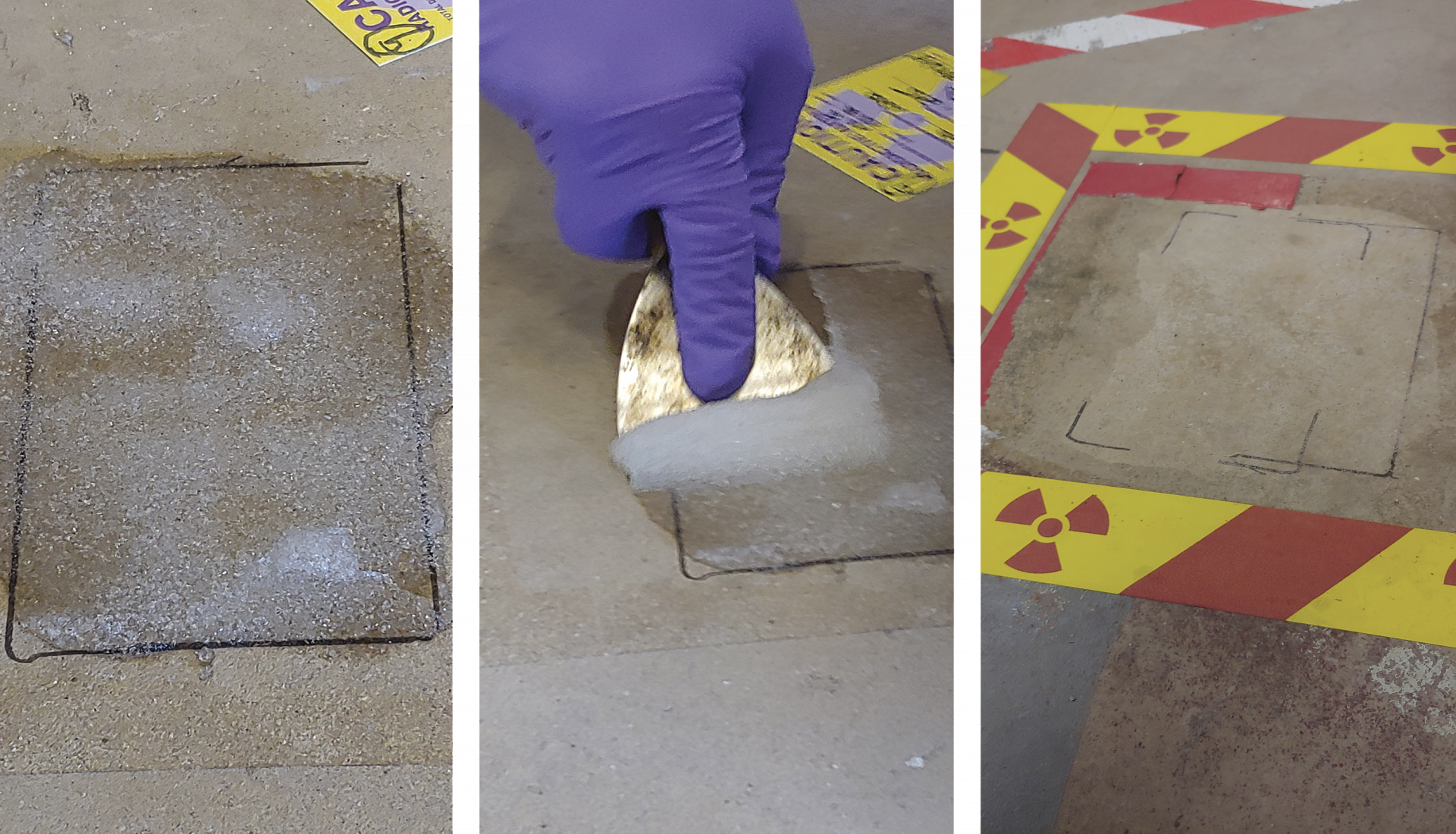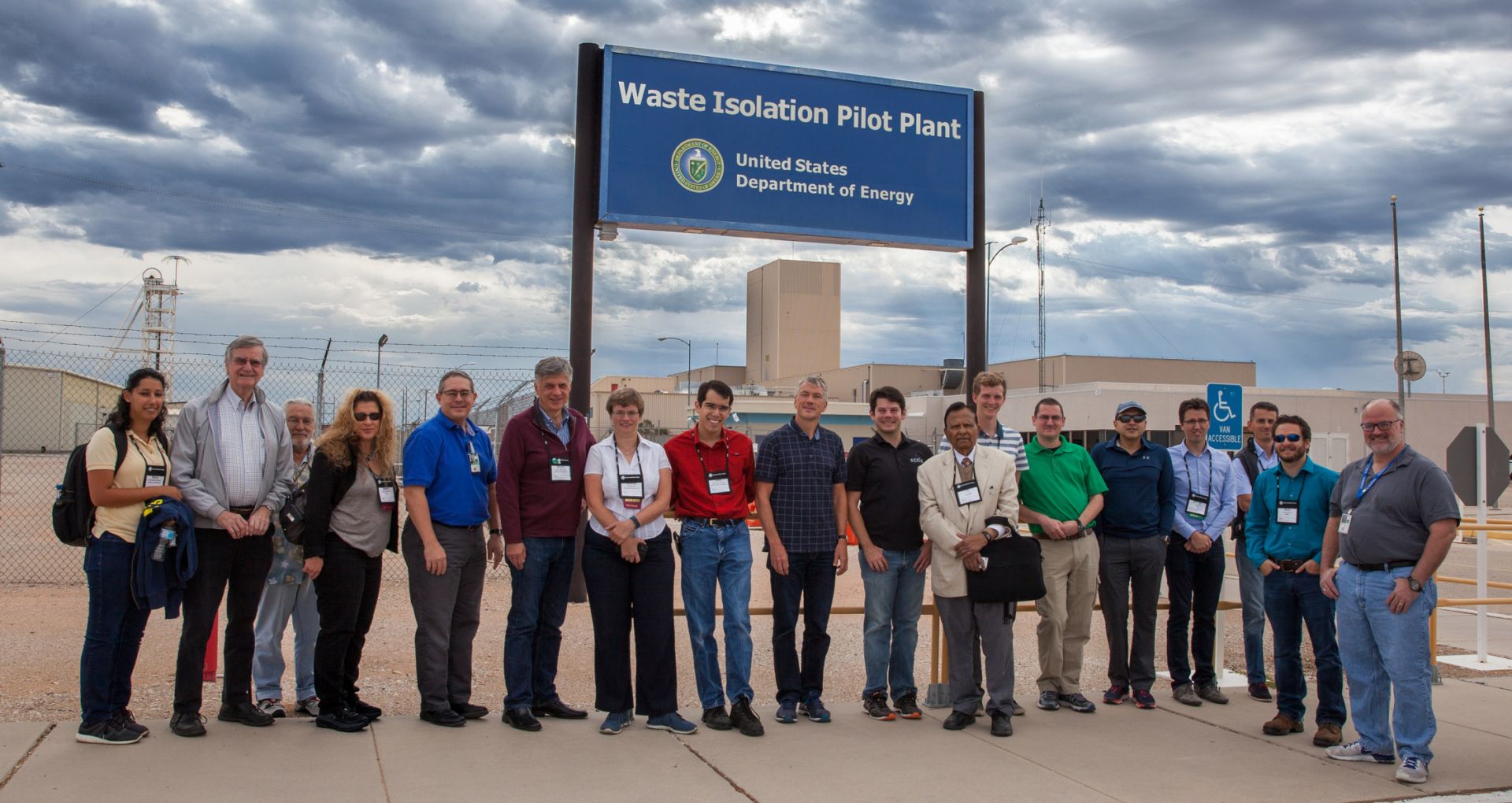The DOE’s Transformational Challenge Reactor program is harnessing recent advances in manufacturing, materials, and computational sciences to rapidly build and operate an advanced reactor core.

The TCR program is leveraging an agile approach—one that is centered around continuously informing the process—to accelerate deployment timelines and introduce performance improvements. Image: Adam Malin, ORNL
Soon after Enrico Fermi’s Chicago Pile-1 went critical for a brief duration in December 1942, the construction of the first continuously operating reactor, the X-10 Graphite Reactor, was initiated in February 1943 at Clinton Engineer Works in Oak Ridge, Tenn. On November 4 of that year, a mere nine months after the start of construction, the reactor began operation. This marked the onset of what Alvin M. Weinberg referred to as “the first nuclear era,” during which many reactors of various designs and operating parameters were built and demonstrated across the United States. Forty years ago, the Fast Flux Test Facility was the last U.S. non-light-water reactor to reach criticality, and it has since been decommissioned.
The partial collapse of PUREX Tunnel 1 in 2017 prompted a review of Hanford’s maintenance of the site’s unused, contaminated buildings.
A report released to the public on February 20 by the Government Accountability Office concluded that maintenance inspections at several contaminated excess facilities at the Department of Energy’s Hanford Site, near Richland, Wash., have not been comprehensive and that there are areas of some facilities that personnel infrequently or never enter, either physically or by remote means, to conduct inspections. The GAO reviewed surveillance and maintenance (S&M) requirements and activities at 18 of Hanford’s approximately 800 excess facilities that require cleanup and found that improvements to the site’s S&M program are needed.
BWXT is using advances in manufacturing and fuel to power exciting technology
The United States is pursuing the objective to land humans more than 100 million miles away on Mars, and nuclear power has the potential to be a key technology in getting to the Red Planet and providing power while there. Specifically, nuclear thermal propulsion (NTP) is a promising approach that could enable astronauts to travel from Earth’s orbit to Mars and back in a fraction of the time, and with greater safety, than is available with other options.
ANS Best Oral Presentation/Paper Waste Management 2019
March 10, 2020, 8:42AMRadwaste SolutionsLaura Merlo-Sosa, Hugh Boniface, Richard Prokopowicz, and Sam Suppiah Heavy water is used both for moderating nuclear fission and transporting heat in CANDU reactors. As a result of heavy water use in these systems, tritium is produced in small quantities from thermal neutron activation of deuterium. The presence of tritium in the heavy water contributes to the radiation dose of the reactor staff and radioactive emission from the reactor facility. Tritium dose is usually controlled through design and operating procedures that minimize leaks and limit exposure to the tritiated water. Many of the CANDU operators have also reduced the operational tritium concentration through detritiation of the heavy water from the reactor. Detritiation is carried out in a centralized facility, such as the Tritium Removal Facility in Darlington, which provides this service to Ontario’s nuclear reactor fleet. Detritiation reduces both tritium emission and dose to workers and the public from reactor operation.
As demands for a comprehensive U.S. waste management plan increase, private vendors are certifying new SNF/HLW transportation cask designs.
A large-scale campaign to move spent nuclear fuel and high-level radioactive waste in the United States to a central repository or interim storage site does not appear to be coming anytime soon. External pressures, however, including a growing number of nuclear power plant closures and increased stakeholder demand to remove stranded spent fuel and HLW, are shifting focus to building the infrastructure needed to move large volumes of waste. This includes the design and manufacture of shielded transportation casks for shipping the waste by truck or rail.
In its ongoing effort to keep its criteria relevant, ABET has revised its student outcome and curriculum requirements.
 ABET, originally an acronym for the Accreditation Board for Engineering and Technology, is a nonprofit, nongovernmental organization that accredits college and university programs in the disciplines of applied and natural science, computing, engineering, and engineering technology. ABET accredits degrees at the associate, bachelor’s, and master’s levels. Over the years, the organization has expanded its domestic and global accreditation presence, and it currently accredits over 4,000 programs in 32 countries.
ABET, originally an acronym for the Accreditation Board for Engineering and Technology, is a nonprofit, nongovernmental organization that accredits college and university programs in the disciplines of applied and natural science, computing, engineering, and engineering technology. ABET accredits degrees at the associate, bachelor’s, and master’s levels. Over the years, the organization has expanded its domestic and global accreditation presence, and it currently accredits over 4,000 programs in 32 countries.
An updated polymer gel from Argonne National Laboratory proves to be effective in removing radioactive contaminants from a legacy site.

The gel is applied to an area (left), where it is allowed to work for two to three hours before being removed. The final activity of the cleaned area (right) was counted using HPGe and Ludlum alpha/beta radiation detectors. Photos courtesy of ANL.
Current techniques for radiological decontamination often involve debasing or demolishing structures to contain contaminated dust and haul debris away. This is a costly method of decontaminating buildings and structures. If, however, effective nondestructive methods can be found, significant savings are possible. One such method, based on new research from engineers at the Department of Energy’s Argonne National Laboratory in Lemont, Ill., is now available.
The geologic repository for defense-related transuranic waste reached a milestone in 2019.
February 10, 2020, 7:38AMRadwaste SolutionsJef Lucchini, Robert Kehrman, and George Basabilvazo 
Participants to the 2017 Nuclear Criticality Safety Division topical meeting attended a tour of the WIPP facility, which marked its 20th anniversary this past year. Photos courtesy of WIPP
March 26, 2019, marked the 20th anniversary of the first shipment of transuranic (TRU) waste to the Waste -Isolation Pilot Plant (WIPP) facility in southeastern New Mexico. Celebrations of the 20-year mark of waste operations recognized the role of the WIPP facility in cleaning up legacy TRU waste from 22 generator sites nationwide.
The NWTRB offers findings and recommendations to the DOE on technical issues that need to be addressed in preparing for an integrated, nationwide program to transport nuclear waste.
The U.S. Nuclear Waste Technical Review Board (NWTRB or Board) recently completed an evaluation of Department of Energy activities related to transporting spent nuclear fuel (SNF) and high-level radioactive waste. These topics have been the subject of several Board meetings and associated reports, and in September 2019, the Board issued a report, Preparing for Nuclear Waste Transportation–Technical Issues That Need to Be Addressed in Preparing for a Nationwide Effort to Transport Spent Nuclear Fuel and High-Level Radioactive Waste [1], which focuses on the issues DOE will need to address to plan and implement an integrated transportation program. In its report, the Board describes 30 broad technical issues that DOE needs to address and offers three sets of findings and recommendations.
The interior of the process building at the American Centrifuge Plant in Piketon, Ohio, where Centrus Energy plans to operate a HALEU demonstration cascade by June 2022. (Photo: Centrus Energy)
Advanced reactor cores are being designed for higher efficiencies and longer lifetimes, but to get there, they need high-assay low-enriched uranium (HALEU).
Enriched to between 5 and 19.75 percent fissile U-235, HALEU is packed with nuclear potential. It can be used as a feedstock for the demonstration of new fuel designs, from uranium alloys to ceramic pellets and liquid fuels. Those fuels can enable advanced reactor and microreactor demonstrations. Operating light-water reactors could potentially transition to HALEU uranium oxide fuels for extended operating cycles and improved plant economics.



 ABET, originally an acronym for the Accreditation Board for Engineering and Technology, is a nonprofit, nongovernmental organization that accredits college and university programs in the disciplines of applied and natural science, computing, engineering, and engineering technology. ABET accredits degrees at the associate, bachelor’s, and master’s levels. Over the years, the organization has expanded its domestic and global accreditation presence, and it currently accredits over 4,000 programs in 32 countries.
ABET, originally an acronym for the Accreditation Board for Engineering and Technology, is a nonprofit, nongovernmental organization that accredits college and university programs in the disciplines of applied and natural science, computing, engineering, and engineering technology. ABET accredits degrees at the associate, bachelor’s, and master’s levels. Over the years, the organization has expanded its domestic and global accreditation presence, and it currently accredits over 4,000 programs in 32 countries.
